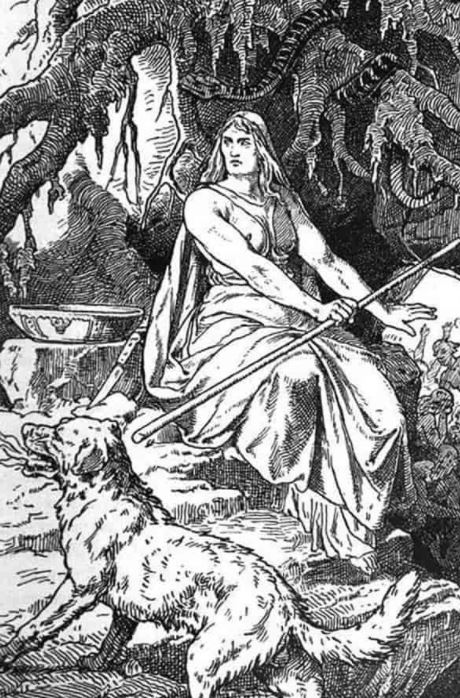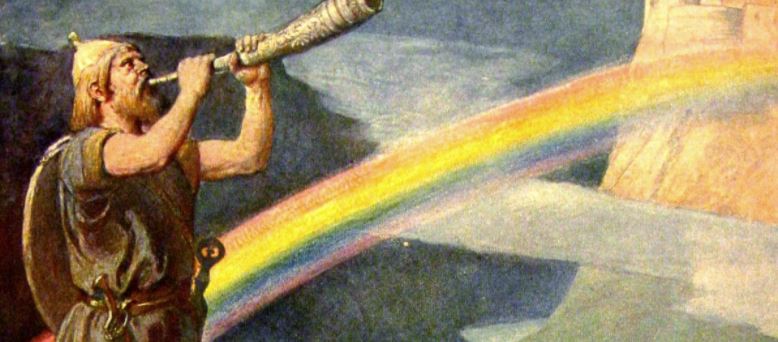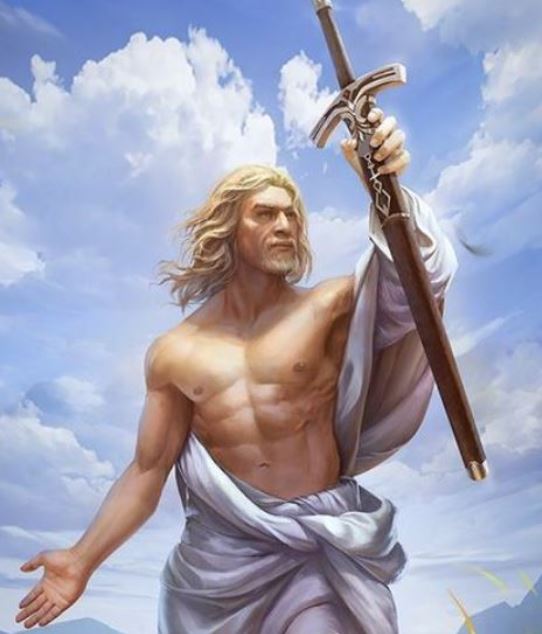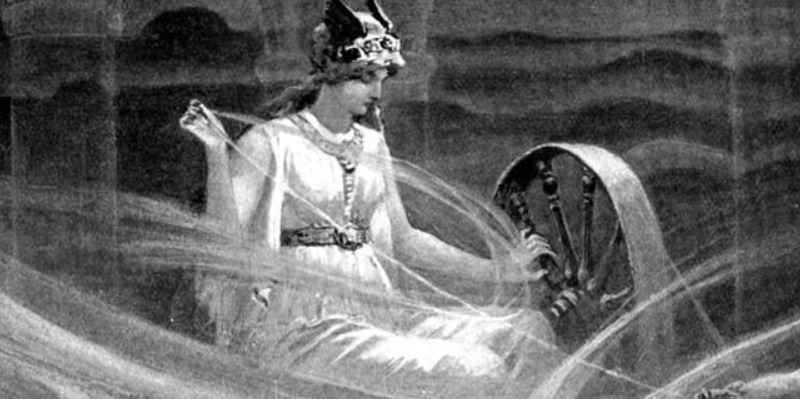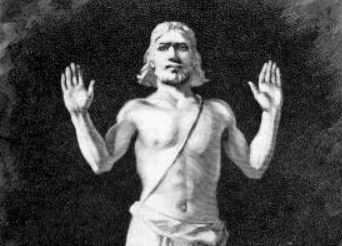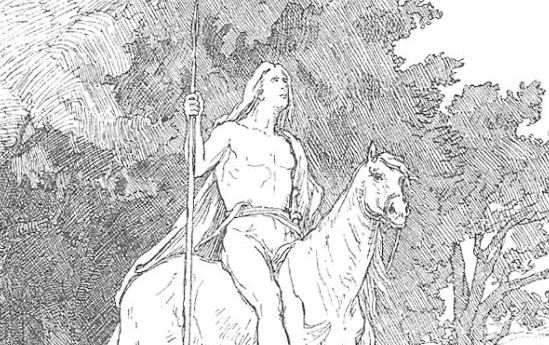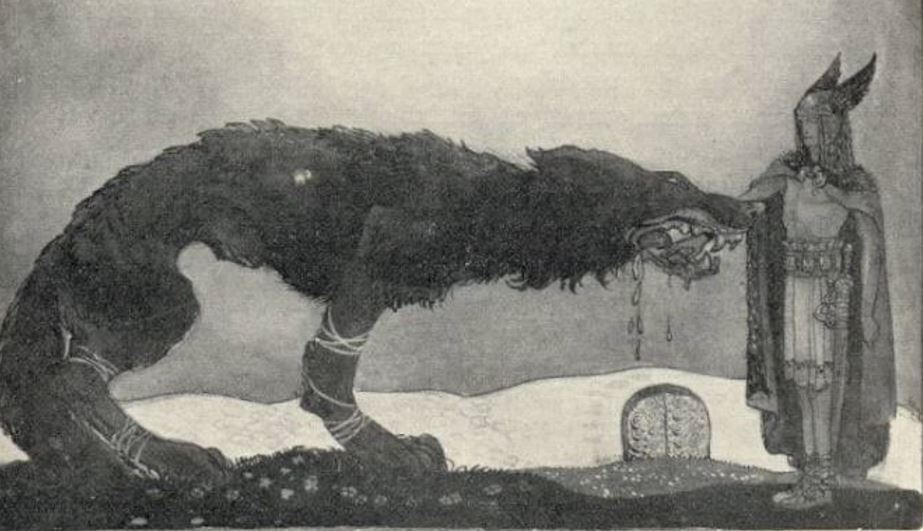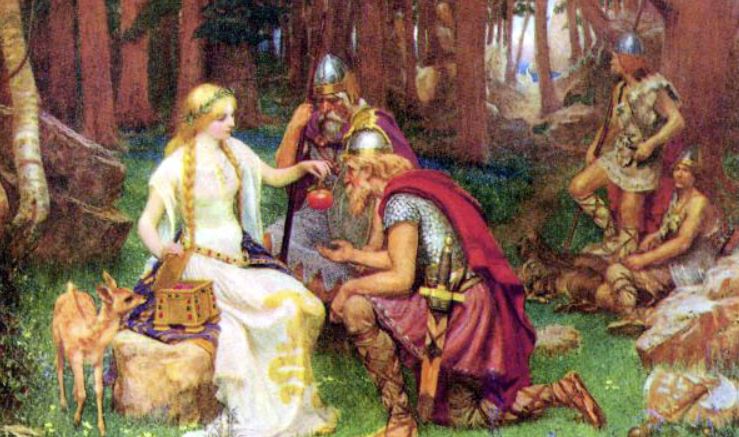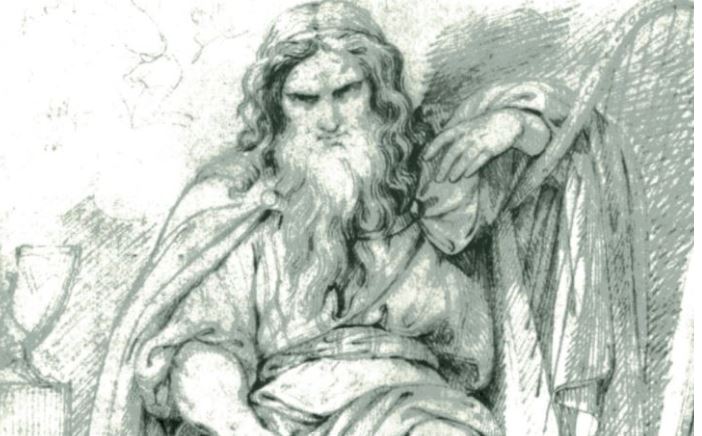Norse Goddess Hel, Queen of Helheim and Goddess of Death
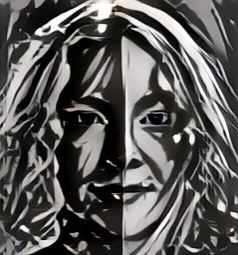
The Norse goddess Hel was the goddess of the Underworld, one of the places where ancient Norsemen thought that dead people went.
This location was often called Hel like its queen or, alternatively, Helheim, which actually meant “the realm of Hel”. And Hel location was in the cold, lifeless lands of the north, under the ground.
It is not clear what rules were used, if any, to decide whether a dead person had to go to Hel or in another one of the Afterworlds.
Anyway, it seems certain that going to Hel was neither a form of punishment nor a prize. In fact, even though the Norse goddess of death Hel was often described in myths as an indifferent and harsh character.
Her reign was not always depicted in negative terms: usually, the persons who ended up there were told to keep on with their ordinary lives, the ones they led before dying.
Negative portrayals of the Underworld also exist, but they seem to have been influenced by the Christian concept of Hell and to have no link with the authentic Norse mythology.
The Helheim Glacier, named after Hel goddess of death
Hel Norse goddess of death: Origin of the Name
It seems that the word “Hel” is linked to the proto-germanic noun “haljo”, which would have meant “hidden place”.
It would have therefore referred to the fact that the Norse goddess Hel and her realm are located under the ground and are not visible.
A representation of the Norse goddess of death Hel
History of the Norse goddess of death Hel and Most Important Myths Related to Her
The Norse goddess Hel was said to be the daughter of the trickster god Loki and of the giantess Angrboda.
As such, she would have been the sister of the evil wolf Fenrir and of the monstrous serpent Jormungand, that would have had a crucial role in the Ragnarok.
The Norse goddess of death Hel is mentioned many times in the Prose Edda, an Old Norse text that would have been written or compiled, at least to some extent, by the Icelandic historian Snorri Sturluson.
In this book, it is told that the gods, afraid of the evil that could come from Loki’s children, would have sent Hel to the Underworld, of which she would have been put in charge.
Much other information about the Norse goddess Hel’s life in the Underworld is given by Snorri but, unfortunately, his writings seem to have been highly influenced by Christian culture and, therefore, seem to be not reliable.
The only surely original myth featuring the Norse goddess of death Hel as a prominent character is the story of the death of Baldur.
The Death of Baldur and the Role of Hel Norse Mythology
Baldur was the son of Odin and of his wife Frigg. He was one of the most amiable among the gods so that all of them loved him.
One day, Baldur began having premonitory dreams, announcing some great misfortune that would have happened to him.
Odin immediately went to the Underworld, where he met a dead seeress from whom he thought he could discover the meaning of the dreams.
Having noticed that the Underworld was decorated, like whether a great event was to occur, he asked the seeress about the upcoming festivity, and she revealed to him that it would have had Baldur as its main guest.
Odin returned to Asgard and reported to the other gods the terrible news. They decided to try to prevent the death of Baldur even though they knew that Fate could not be overcome.
Frigg, in particular, asked any living or dead entity of the Universe to swear that they would have not harmed Baldur.
The promise was pronounced by every entity, except for the mistletoe: anyway, it was thought to be too feeble to hurt the strong Baldur. Loki, in disguise, interrogated Frigg and discovered her plan’s flaw, which he decided to use for one of his most terrible actions.
He carved a spear with the mistletoe, and then tricked the blind god Hodr into throwing it to Baldur, killing him. The beloved god, therefore, ended up in the Norse goddess Hel’s realm.
The mistletoe, the entity that would kill Baldur
The Deal with the Norse goddess of death
Frigg asked the gods if someone was willing to go to Helheim, the Norse underworld to beg her queen, the Norse goddess of death Hel, to let Baldur come back, in exchange for some ransom.
One of Odin’s sons, Hermod, accepted to try to accomplish the task and immediately began the ride towards the realm of the Norse goddess Hel.
Hermod talked about the great sorrow that the death of Baldur had stirred into all living beings. The goddess Hel, therefore, said that if all the things in the Universe would have wept for Baldur, as proof of what Hermod had told, she would have released him.
Hermod came back to Asgard and reported Hel’s words. It was easy to persuade everything to weep for Baldur, except for the giantess Tokk, who was probably Loki in one of his disguises.
Tokk would have remained cold and said: “Let Hel keep what she has!” Because of her, Baldur would have remained in the Norse goddess Hel’s reign.
Powers of the Norse goddess of death Hel
As evident from the story of Baldur, the goddess Hel would have had full power over those who had ended up in her realm.
She was in fact deemed capable of releasing one person’s soul, allowing her or him to come back to life.
Anyway, as we have seen, she would not have used this power in any of the original myths we know.
Norse goddess Hel symbols and their meaning
According to the few sources in our possession, the only distinctive feature of Hel would have been the color of her skin. Let’s see what it could have meant.
Norse goddess Hel symbol: The Two-Colors Complexion
Snorri says that, apart from her perpetually fierce expression, the goddess Hel is easily recognizable by the color of her skin: in fact, it would have been half-black and half-white.
This peculiar feature might refer to the role of the goddess Hel as a link between the bright world of the livings and the dark underworld of the dead.
The main Norse goddess Hel symbol: the two-colors complexion
Additional Facts of the Norse goddess of death
It seems that the word “Hel”, in the beginning, indicated only the Underworld.
The figure of the Norse goddess Hel would have been born later, by a process of personification. Nevertheless, her character seems to have deep roots in the ancient pagan religions of Europe and can be linked to other deities.
In particular, Hel has been connected by some scholars to the Irish goddess Badb, who also had a bond with death.


